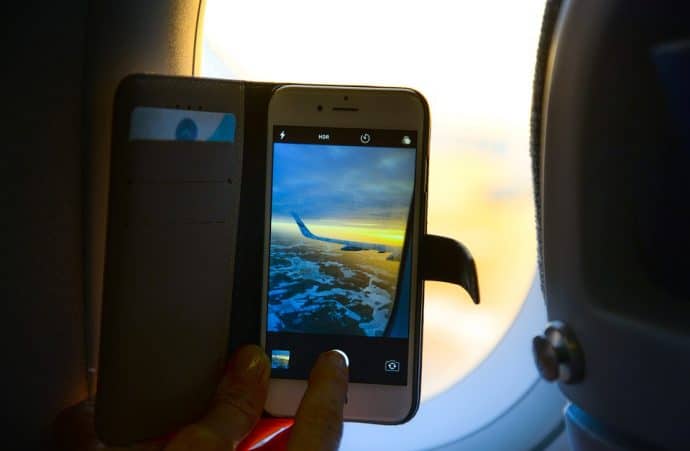Long-haul flights can be a literal pain in the bum—and the ankles, legs, back, and just about everywhere else. Airline seats are getting smaller with less leg room while the amenities are getting scarcer. “Surviving” a long-haul flight isn’t necessarily an exaggeration. When you’re stuck at cruising altitude for several hours, both your physical and mental health can take a beating. Particularly for those with panic disorders, anxiety, or claustrophobia, taking a flight takes a real toll. However, there are tools for all passengers to better enjoy their flight.
Practicing good postures is key, and there’s no better place to do it than on a plane. Avoid crossing your legs, which can cause the ankles to swell painfully. Most Americans suffer from lower back pain, and bringing a lumbar support pillow with you can help keep your spine aligned. If you’re packing light, there are inflatable options, or you can double up on the freebie pillows and blankets if you’re in a pinch. Avoid slouching, and if you plan to sleep on your flight consider your neck comfort.
There are a variety of devices to help you sleep better and with better posture on a plane. They range from products that you wrap around the seat behind you to support you by the forehead to turtle-like pillows that encompass the entire neck. However, for those who crave something as close to home as possible, consider bringing a cheap pillow as your personal item that you can dispose of upon arrival. For most passengers, those tiny complimentary pillows are large or comfortable enough for a good flight’s sleep.
A long-haul flight is one of the few places where technology addiction isn’t just accepted, but encouraged. From your own devices to the countless free movies and television shows, a lot of people pass an entire flight glued to a screen. There’s also more options than ever for good Wi-Fi connections en route, making working in the air a possibility. However, just like any other day, schedule breaks for your eyes. Stand up, walk up and down the aisle, and consider some flight-friendly yoga asanas to discourage muscle soreness.
Some flight-friendly stretches include “cat cow” of your back, which you can practice seated or standing. It helps ward off lower back pain and increases the “juiciness” of the spinal discs. Pressing your palms firmly against closed eyelids is a great sinus and headache reliever (and part of a yoga pranayama practice). From flexing and extending your feet and hands to pronating and supinating your forearms, stretching and movement while on a plane doesn’t have to be “obvious” or embarrassing. It can help you land with fewer pains and feeling surprisingly well rested.
Options Beyond the Screen and Sleep
Staring at a screen or trying desperately to sleep aren’t the only two options for passing the time on a long-haul flight. Ideally, try to adjust your internal clock to minimize jet lag when you arrive. This requires staying awake and alert (not in zombie mode with a screen) during parts of a long flight. Bring a book or an e-reader to ignore your imagination and let your eyes rest. Write in a journal by hand (not on a laptop). If you’re traveling with a companion, take this time to reconnect and talk. Non-screen games like Mad Libs and travel-sized board games can all help make a long-haul flight more enjoyable.
It’s also common to let the flight attendants alert you to when and what to eat. Airline food has gotten much better in recent years, but it’s been adjusted to suit palates that change at certain altitudes. Pack healthy, low-sodium items instead of depending on “plane food” and avoid alcohol if you can. Dehydration and sleep issues are the last thing any passenger needs.
If you practice meditation, a long-haul flight is both a challenge and an opportunity to indulge. With so many options for meditation, you’re bound to find one that suits you. Download white noise or another soothing sound to listen to with your eyes closed. Focus on positive affirmations, or practice pranayama by counting your breaths. Choose healthy activities during your flight, along with healthy foods, to land refreshed and surprisingly energized.
Dress in layers that are comfortable. Depending on the length of the flight, you may want to bring a travel-sized face wash and change of unmentionables to keep feeling fresh. Lightweight, stretchy clothes that don’t wrinkle are readily available and will help make the journey a little smoother.
What are your best tips for long airborne travels?

